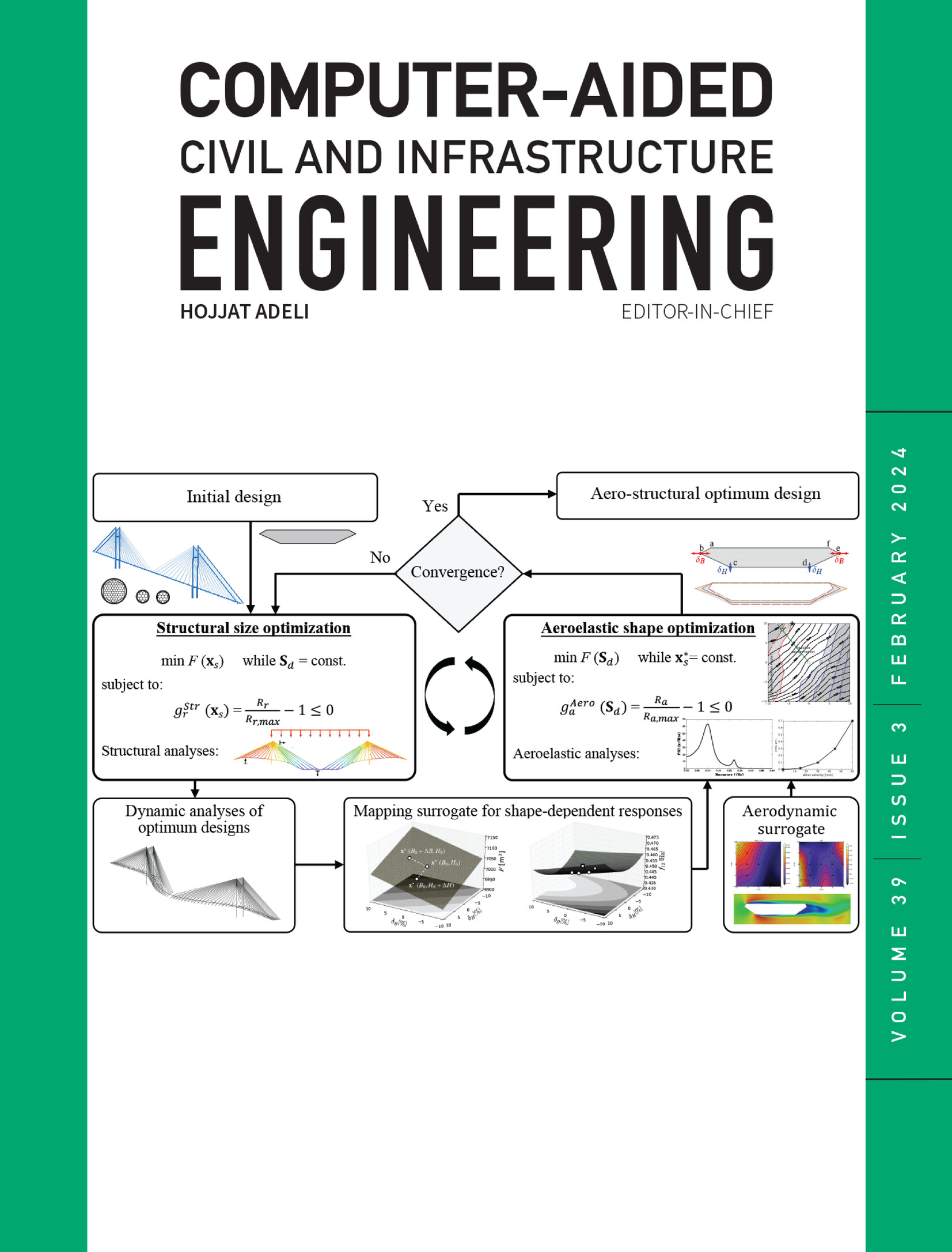利用低成本微型飞行器进行灾后室内自主导航和幸存者探测
IF 8.5
1区 工程技术
Q1 COMPUTER SCIENCE, INTERDISCIPLINARY APPLICATIONS
引用次数: 0
摘要
本文介绍了专为在灾后室内环境中作业的低成本微型飞行器(MAVs)量身定制的创新型自主幸存者探测管道。它由三个主要部分组成:(1) 用于幸存者地理标记的新型管道,包括自主导航、绘图和使用热图像检测幸存者;(2) 使用低成本商业级热像仪确保完整热扫描覆盖范围以检测幸存者的导航策略;(3) 使用 YOLOv8x 和热成像进行稳健而准确的幸存者检测。为了证明拟议框架的有效性,首先在机器人操作系统(ROS)中模拟了自主导航算法,并在不同布局下进行了实验验证。其次,对 YOLOv8x 算法进行了预训练,并实现了高精度。最后,在模拟的灾后环境中对部分被覆盖的幸存者进行了实际实施。结果表明,所提出的管道能够准确绘制环境布局图,并识别所有幸存者。这项研究表明,配备基本红外热像仪的经济型无人飞行器可有效用于地理标记幸存者,为灾后救援任务提供支持。本文章由计算机程序翻译,如有差异,请以英文原文为准。
Autonomous post‐disaster indoor navigation and survivor detection using low‐cost micro aerial vehicles
This paper introduces an innovative autonomous survivor detection pipeline tailored for low‐cost micro aerial vehicles (MAVs) operating in post‐disaster indoor environments. This consists of three main components: (1) a novel pipeline for survivor geotagging, which includes autonomous navigation, mapping, and detection of survivors using thermal images; (2) a navigation strategy to ensure complete thermal scanning coverage for survivor detection using low‐cost commercial grade thermal camera; and (3) robust and accurate survivor detection using YOLOv8x and thermal imaging. To demonstrate the effectiveness of the proposed framework, first, the autonomous navigation algorithm is simulated in Robotic Operating System (ROS) and experimentally validated under different layouts. Second, the YOLOv8x algorithm is pretrained and achieves high accuracy. Finally, a real‐world implementation was conducted with partially covered survivors in a simulated post‐disaster environment. The results demonstrated the proposed pipeline can accurately map the layout of the environment and identify all survivors. This study demonstrates that affordable MAVs with basic thermal cameras can be effectively used to geotag survivors to support rescue missions during post‐disaster events.
求助全文
通过发布文献求助,成功后即可免费获取论文全文。
去求助
来源期刊
CiteScore
17.60
自引率
19.80%
发文量
146
审稿时长
1 months
期刊介绍:
Computer-Aided Civil and Infrastructure Engineering stands as a scholarly, peer-reviewed archival journal, serving as a vital link between advancements in computer technology and civil and infrastructure engineering. The journal serves as a distinctive platform for the publication of original articles, spotlighting novel computational techniques and inventive applications of computers. Specifically, it concentrates on recent progress in computer and information technologies, fostering the development and application of emerging computing paradigms.
Encompassing a broad scope, the journal addresses bridge, construction, environmental, highway, geotechnical, structural, transportation, and water resources engineering. It extends its reach to the management of infrastructure systems, covering domains such as highways, bridges, pavements, airports, and utilities. The journal delves into areas like artificial intelligence, cognitive modeling, concurrent engineering, database management, distributed computing, evolutionary computing, fuzzy logic, genetic algorithms, geometric modeling, internet-based technologies, knowledge discovery and engineering, machine learning, mobile computing, multimedia technologies, networking, neural network computing, optimization and search, parallel processing, robotics, smart structures, software engineering, virtual reality, and visualization techniques.

 求助内容:
求助内容: 应助结果提醒方式:
应助结果提醒方式:


